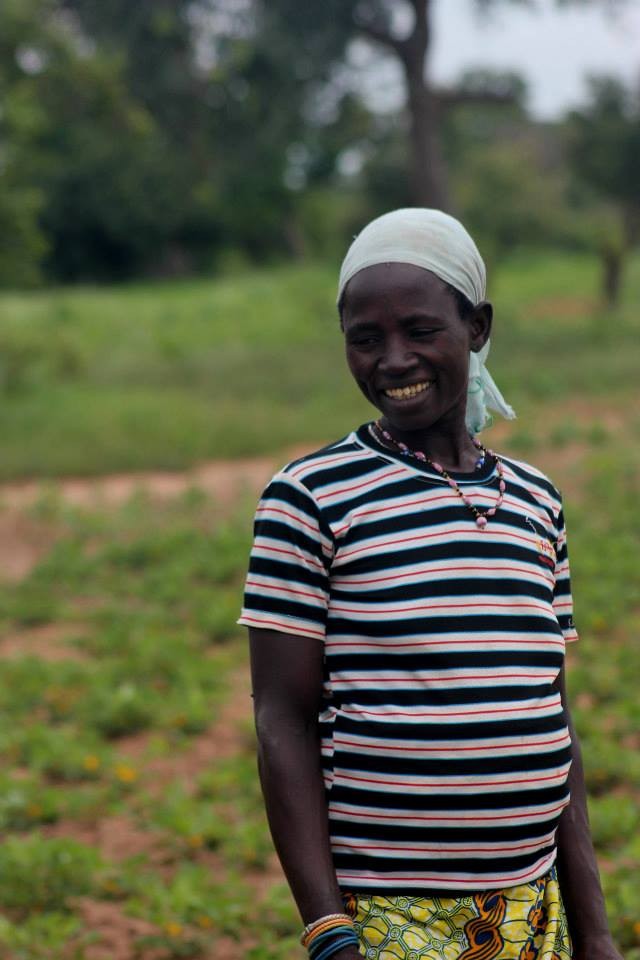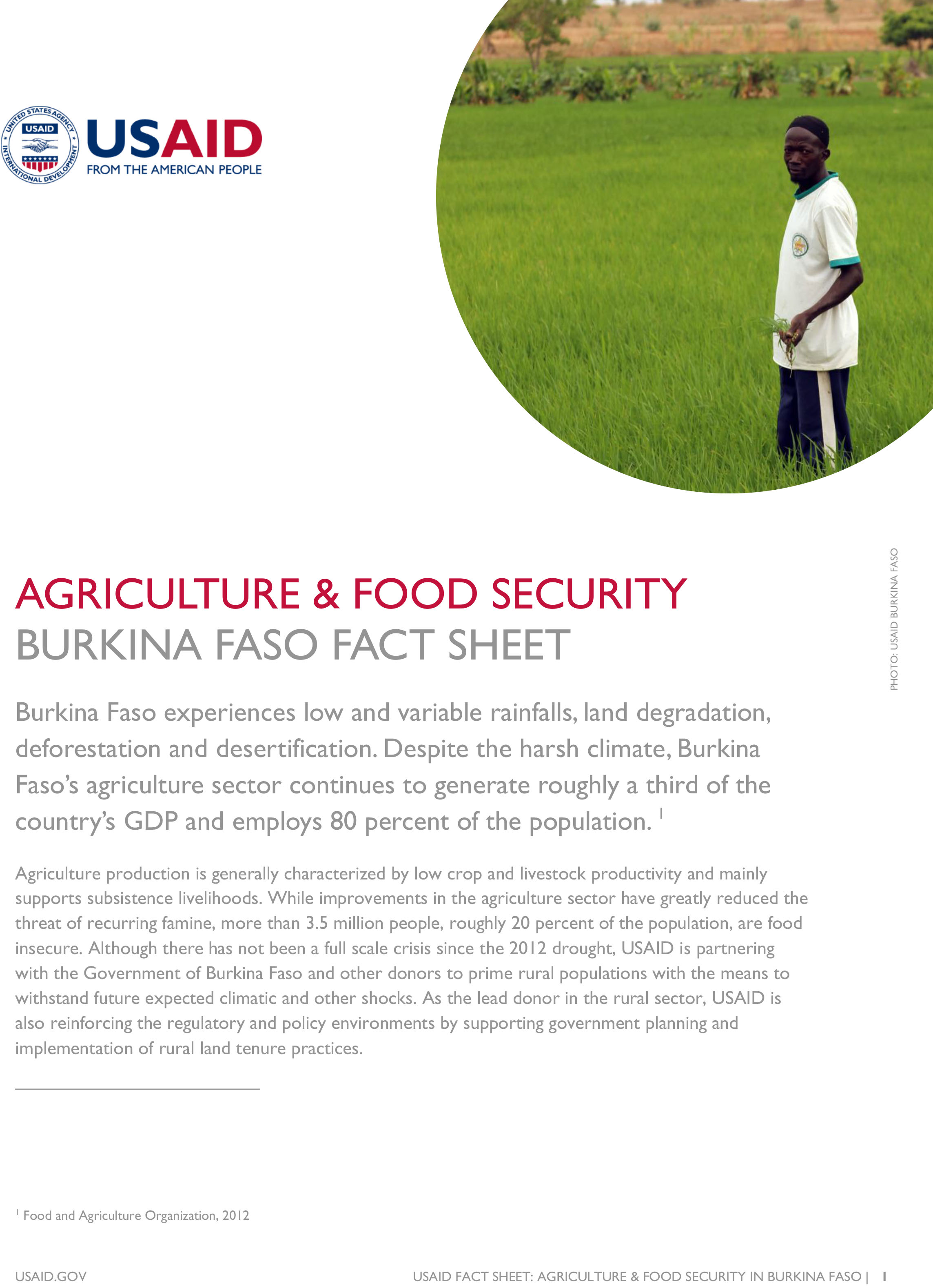Speeches Shim

Burkina Faso experiences low and variable rainfalls, land degradation, deforestation and desertification. Despite the harsh climate, Burkina Faso’s agriculture sector continues to generate roughly a third of the country’s GDP and employs 80 percent of the population.
Agriculture production is generally characterized by low crop and livestock productivity and mainly supports subsistence livelihoods. While improvements in the agriculture sector have greatly reduced the threat of recurring famine, more than 3.5 million people, roughly 20 percent of the population, are food insecure. Although there has not been a full scale crisis since the 2012 drought, USAID is partnering with the Government of Burkina Faso and other donors to prime rural populations with the means to withstand future expected climatic and other shocks. As the lead donor in the rural sector, USAID is also reinforcing the regulatory and policy environments by supporting government planning and implementation of rural land tenure practices.
Agriculture
USAID is supporting Burkina Faso’s agriculture sector with Feed the Future (FtF) and Food for Peace (FFP) resources focused on improving the agricultural livelihoods of the most vulnerable populations. Under the Resilience in the Sahel Enhanced (RISE) project that includes two rural loan programs with Ecobank Burkina and the Faitiere des Caisses Populaires du Burkina, USAID programming focuses on improving access to credit, diversifying economic opportunities, and intensifying agricultural and animal production. In addition, USAID is working to improve the competitiveness and inclusiveness of three pro-poor value chains: cowpea, small ruminants and poultry, while strengthening the organizational capacities of farmer groups. USAID also provides support for rural Burkinabe to obtain land titles under the Government of Burkina Faso’s 2009 rural land tenure law.
Burkina Faso Fact Sheet-Agriculture & Food Security ![]() (pdf - 252k)
(pdf - 252k)
Food Security
USAID is reducing food insecurity through a combination of emergency humanitarian and development assistance. FTF and FFP programs comprise the core elements of the food security program in Burkina Faso. RISE uses a multi-sectoral approach to address the diverse and structural causes of chronic vulnerability by increasing sustainable livelihoods and improving health and nutrition. The FFP Development Food Assistance Programs aim to improve diversification of household food production and income generation; reduce chronic malnutrition among children under 5 years old, as well as pregnant and lactating women; and empower women through increased school enrollment and attendance of girls.
USAID Burkina Faso Agriculture and Food Security Goals
- Increased agricultural production and productivity
- Developed nutrition-sensitive practices
- Ensured appropriate natural resource management, including land tenure
- Improved farmers’ marketing capacities
- Expanded access to credit
- Alignment of all interventions to the Government of Burkina Faso’s Country Resilience Priorities and its National Rural Sector Program II



Comment
Make a general inquiry or suggest an improvement.